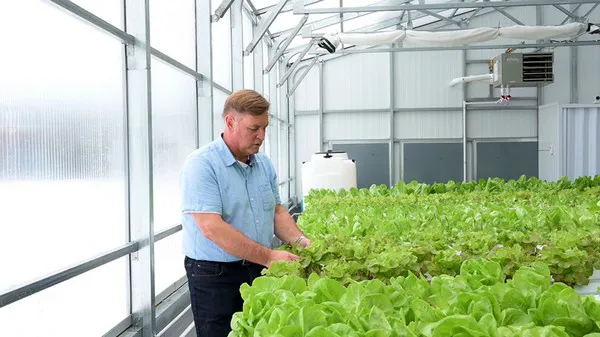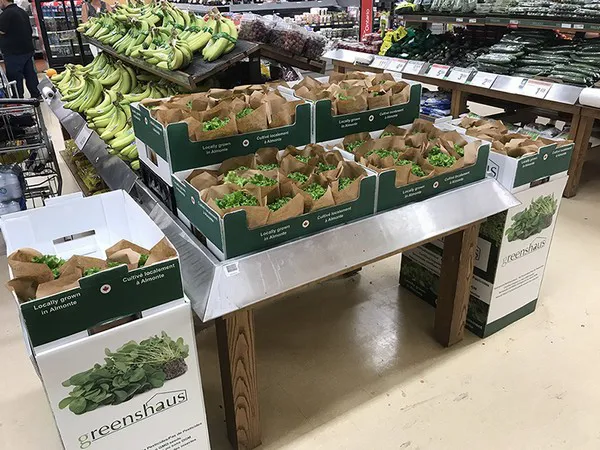Thinking of starting a farm? You are not alone. Farms offer an opportunity to connect with nature, work with your hands as well as your mind, and serve your community by providing fresh and nutritious food. To be successful, however, requires a plan. There are two types of plans that can support your decision to start a farm business: a business plan or a feasibility plan. Both are important, but one typically comes before the other. 
A business plan is a comprehensive document that outlines the goals, strategies, and financial projections for a new or existing business. A business plan can also be used to secure financing or investment for the business and is usually written for external stakeholders such as investors, lenders, or partners. A good business plan may be 50- 100 pages long.
A feasibility plan, or a farm feasibility study, is a preliminary assessment of a business idea to determine if it is viable and worth pursuing. This document can be used by an entrepreneur to evaluate the feasibility of his or her business idea before investing significant time and resources in it. It is typically written for internal stakeholders such as the owner, potential employees, or the management team.
Which one to choose
If you are still in the idea phase or not sure if you want to take the plunge, then I suggest doing a feasibility plan. If you already have the farm venture already laid out (or running) and are committed to the choice, then the extra work required for a full farm business plan may be warranted, especially if you are trying to attract investors. The good news is that much of the information in a feasibility plan can be incorporated into your farm business plan. Consequently, I recommend creating a feasibility plan as your starting point. 
Benefits of having a plan
The main benefit of having a plan is that it really helps you get in touch with your gut without having to actually build the farm. It also mitigates financial risk. Finally, your plan will become the basis for how you set up and operate the company. In that sense, your plan is the foundation for what will come.
Elements of the plan
Here then, are the top 10 elements needed for your feasibility plan, which are sandwiched between your Executive Summary and Conclusions sections.
1. Company identity
The identity section of the business plan includes the company’s mission, vision, values, and assets. The mission statement should be a clear and concise statement of the company’s goals and objectives, which can be used to guide decision-making. The vision statement describes where the company wants to be in the future. A values statement reflects the company’s values, culture, and guiding principles, e.g., do you want to grow for the local population, practice sustainability, promote economic growth, etc.? For a great example of a value statement, look at J&J’s Credo. This section should also discuss the company’s social impact if relevant.
2. Market opportunity or market analysis for farming
The market opportunity section of the business plan should discuss the problem or opportunity the company’s products or services address. It should also provide an overview of the size of the market, including sales, population, and units consumed. Additionally, this section should identify important industry trends and any regulations that might impact the success of the venture. 
3. Products and services
In this section, the company’s products and services should be described in detail and identify the value proposition offered to clients. This section should also discuss how the company’s offerings are different from those of its competitors. Target customers should be highlighted.
4. Business model and financial projections for farming
The business model section of the plan is where the company’s revenue streams and cost structure are articulated, i.e., it should describe how the company will make money in both the short and long term based on the equation: Profits=Revs-Costs. This section should also include a compelling story that explains why customers will choose to buy from the company.
5. Operations plan
The production and operating requirements section of the business plan should describe the production requirements for the product or service. Key enabling technologies should be identified. Additionally, this section should identify key personnel and any unique or special skills required to run the operation. 
6. Management and organization
The management and organization section should provide an overview of the key people who will lead and manage the venture. It should include a description of roles and responsibilities and the qualifications of key talent in the organization. An outline of the overall structure of the business can be drafted.
7. Marketing strategy
The marketing strategy should outline the tactics that will be used to promote the product or service to generate sales. It should include a description of the pricing strategy, the promotional tactics, and the distribution channels that will be used. It should also describe the characteristics of target customers and how they will learn about the product or service. Additionally, this section should provide a detailed description of the sales process, including when the sale will occur and who will conduct the sale.
8. Competitive analysis
The competitive and industry analysis section of the business plan should identify the company’s major competitors and barriers to entry. It should also analyze the industry in terms of the threat of new entrants, the bargaining power of buyers and suppliers, the threat of substitute products or services, and the intensity of competitive rivalry (c.f. Porter).

9. Risk analysis or risk assessment for farming
The risk analysis section of the plan should identify the potential risks and challenges that the company may face. It should include information about market risks, operational risks, and financial risks. This section should also explain how you plan to mitigate those risks and how you will respond if they materialize.
10. Funding requirements and conclusion
The funding requirements should provide an estimate of the capital needed to start and operate the proposed venture for at least 1-2 years. It should also include a description of the funding sources that will be used to finance the venture. The plan should close with an assessment of the overall feasibility of the venture and a decision on whether to proceed or not.
Final thoughts
So, before you till the soil or fire up the fertigation system, develop a plan. Keep an open mind as you flesh out each section of the feasibility plan. Does it feel right? What does your gut say? Planning is a process that reveals the strengths and weaknesses of your ideas or aspirations. Use it to your advantage. Once you are satisfied that this is the goal you want to pursue, the fun of designing your farm is next, and modern farming technology now offers a variety of ways to grow food. Do you want to work the soil, build a sustainable greenhouse, or construct a high-tech indoor vertical farm? Your farm can be big or small. You can locate it in a city or a rural area. You can grow any number of cultivars, from tomatoes to microgreens to lettuces to strawberries. The possibilities really are endless.
This article is written by Eric W. Stein, Ph.D. of The Center of Excellence for Indoor Agriculture.
For more information:
Ceres Greenhouse Solutions
www.ceresgs.com
